 About Author: Neeraj Kumar Garg*1, Pankaj Khatri1, Sangeeta Gupta2, N. Ganesh2
About Author: Neeraj Kumar Garg*1, Pankaj Khatri1, Sangeeta Gupta2, N. Ganesh2
1. School of pharmacy, Suresh Gyan Vihar University, Mahal, Jagatpura, Jaipur (Raj.)
2. Incharge, Department of research, jawahar lal Nehru cancer Hospital and Research centre, Idgah hills Bhopal 462001 (M.P.)
Abstract
Alzheimer disease (AD) is a neurodegenerative disorder currently without an effective treatment. Impairment of memory is the initial and most significant symptom of Alzheimer disease (AD). The present study was under taken to investigate the effect of Selaginella bryopteris (popularly known as sanjeevani, Family: Selaginellaceae) on learning and memory. Two doses (250 and 500 mg/kg p.o.) of methanolic extract of Selaginella bryopteris were administered for 7 successive days in separate group of animals. The dose of 500 mg/kg p.o. of the methanolic extract of Selaginella bryopteris significantly improved learning and memory of mice. Antioxidant property of Selaginella bryopteris may be contributing favourably to the memory enhancement effect. However, further studies are necessitated to identify the exact mechanism of action. In the present investigation of Selaginella bryopteris have shown promising memory enhancing agent in the entire laboratory models employed.
Reference ID: PHARMATUTOR-ART-1106
Introduction
Ayurveda is the oldest medical science in the Indian sub-continent and has been practiced since the 12th century BC. Its objective is to accomplish physical, mental, social and spiritual well being by adopting preventive health promoting and holistic approach towards life.
Neurodegenerative disease often effect mental performance in particular memory processing. (Trond M, 2003). Alzheimer disease is a progressive Neurodegenerative brain disorder that is slow in onset but leads to dementia, unusual behaviour, personality changes and ultimately death (Dhingra et al., 2004).
Selaginella bryopteris commonly called “Sanjeevani” belong to family – Selaginellaceae a xerophytic plant found hills of tropical areas, particularly the Arawali mountain, terrain from east to west in India. The plant grows luxuriantly during rains exhibiting a lush green velvety land scape. The whole plant has been shown to have many medicinal uses like: Anti-inflammatory, anti-malarial, anti-leshmanial, apoptosis, burning sensation of urine (Sah NK et al., 2005; Pankaj, 2008; Olef Kunert et al., 2006; Olef Kunert et al., 2008)
Objective
The present study was undertaken to investigate the effects of Selaginella bryopteris popularly known as “Sanjeevani” on learning and memory in mice.
Material and method
Plant material
The plant of Selaginella bryopteris was identified and authenticated by Dr. M. S. Parihar, HOD, horticulture department R.A.S. Agriculture College Sehore (M.P.). The plant of Selaginella bryopteris was collected from a high range of Ediki district, Kerala, India in the months of January 2009. The plant was shade dried at room temperature, grind to moderately fine power and stored in air tight containers.
Experimental Animals
Swiss albino mice (25-30 g) of either sex were used for the study. The animals were housed in group of four in polypropylene cages, under standard laboratory conditions of temperature (25?2oC), lighting (0800-2000 h) and relative humidity (50?5%). The animals had free access to standard pellet chow (Green feed, New Delhi) and water. The animals were acclimatized for a period of minimum 7 days. Experiments were conducted between 0900 and 1400 hrs. The experimental protocol was approved by the Institutional Animals Ethics Committee (IAEC) of Jawahar Lal Nehru Cancer Hospital and Research Centre Bhopal, M.P. and care of laboratory animals was taken as per CPCSEA guidelines (Reg. No. 500/1A/2002/CPCSEA).
Prepration of 50% methanolic extract of Selaginella bryopteris
Defatting of Plant Material
Powdered drug was subjected to extraction with petroleum ether in a Soxhlet apparatus. The extraction was continued till the defatting of the material had taken place.
Extraction with 50 % Methanol
The defatted marc of the drugs was subjected to extraction with 50 % methanol in a soxhlet apparatus. The extraction was continued for a period of 4-5 days. The extract was then concentrated and finally vacuum dried to a constant weight.
Drugs
Drugs such as Shankhpushpi syrup(Dabur pharma, India) and Tween 80 (Ranchem, India) were used in the present study.
Experimental protocol:
In the present investigation, the mice were divided into four group (Pandey S, 1999).
Group 1 control group served as a normal saline
Group 2 standard group (Positive control) served Shankpushpi syrup 200 mg/kg body weight.
Group 3 Test group served as a methanolic extract of Selaginella bryopteris 250 mg / kg body weight.
Group 4 Test group served as a methanolic extract of Selaginella bryopteris 500 mg/kg body weight respectively.
NOW YOU CAN ALSO PUBLISH YOUR ARTICLE ONLINE.
SUBMIT YOUR ARTICLE/PROJECT AT articles@pharmatutor.org
Subscribe to Pharmatutor Job Alerts by Email
FIND OUT MORE ARTICLES AT OUR DATABASE
Exteroceptive Behavior models
Elevated plus- maze
Elevated plus maze served as the exteroceptive behavior model to evaluate learning and memory in albino mice. It is so called exteroceptive behavior as the stimulus existed outside the body. The elevated plus maze (EPM) consisted of two open arms (50×10 cm) crossed with two closed arms (50×10×40cm). The arms were connected together with a central square (10×10 cm). The apparatus was elevated to a height of 70 cm in a dimly illuminated room. For the experiments mice are divided into four groups of four animals each. Group I receives vehicle only, Group II receives shankhpushpi surup on 2nd day, Group III-IV receives graded doses of methanolic extract (250 and 500 mg/kg p.o.) prior to 45 minute of experiments. On the first day, each mice was placed at the end of an open arm, facing away from the central platform. Transfer latency (TL) was taken as the time taken by the mice to move into any one of the covered arms with all its four legs. TL was recorded on the first day. If the mice did not enter into one of the covered arms within 90 second, it was assigned as 90 second. the mice was allowed to explore the maze for 10 second and then was returned to its home cage. Memory retention was examined 24 hour after the first day trial on the second day (Dhingra et al., and Parle et al., 2004).
Radial arm – maze
During RAM training the animals were food deprived to about 80% of their ad libitum body weight and trained for 5 days to run on a radial arm maze. (Brown, wooden, 60x10 cm arms) extending from an octagonal central platform. The maze was kept in the centre of a dimly lit room (15 x 10 ft) with many posters and objects hanging on the wall. The animals were placed in the center of the maze with all 8 arms accessible and baited with chocolate chips. The rats were removed from the maze after visiting all the arms. Arms were rebaited only after the animal left the arm and the maze was cleaned with 50 per cent alcohol solution between animals. Only animals reaching this criterion were trained on the memory tasks. Entry into an arm previously visited within any daily trial was scored as an error
Following habituation session, the animals were trained for 10 trials per day on RAM task (Vogel, 2002; Ganguly, 2008).
Histopathological examination
The brain has been dissected out After 7 days of the treatment of the entire respective subjected group and preserved in 10 % formalin solution for 3 days. After 3rd day 5 and 15 μ section of the brain was taken for histoarchitectural observations. Slides for the histological studies have been prepared by Pal Diagnostic Centre, Guru Khalsa Hospital Bhopal M.P.
Statistical analysis
All result were expressed as mean ± standard error of mean (S.E.M.) and statistical analysed was carried out using one- way ANOVA followed by Turkey- Kramer test. The values were calculated and analysed using Graph Pad Instat 3.06 software run on Window XP (Microsoft Corp.)
Result
Effect on transfer latency (using elevated plus- maze)
TL of first day reflected learning behaviour of animals whereas, TL of second day reflected retention of information or memory. Selaginella bryopteris extract (250mg/kg) administered orally for 7 days did not have any significant effect on TL of first day of training and on second day as compared to control. The higher dose (500 mg/kg) of the extract significantly decreased TL on first day as well as on second day, indicating significant improvement of learning and memory (Table 1).
Table 1 Effect of 50%methanolic extract of Selaginella bryopteris on memory enhancing activity by using Elevated plus maze model
|
S. No. |
Group |
Transfer latency on 1st/7th day (TL) |
Transfer latency after 24 hours (TL) |
|
1 |
Control |
66.75 ± 1.37 |
55±0.91 |
|
2 |
Standard |
46 ± 1.41** |
24.25±1.75** |
|
3 |
Methanolic extract of Selaginella bryopteris (250 mg/kg) |
62.75 ± 4.92 |
48.25±4.92 |
|
4 |
Methanolic extract of Selaginella bryopteris (500 mg/kg) |
55± 2.85* |
32.75±5.12** |
All values are expressed as mean ± S.E.M., P*< 0.05 and P**< 0.01,P***< 0.001, ns = P> 0.05 Considered significant as compared to control.
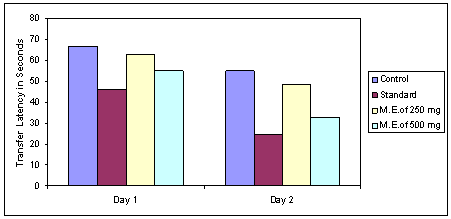
Fig.1 Effect of methanolic extract of Selaginella bryopteris on transfer latency in Swiss albino mice in elevator plus maze model
Effect on number of error and latency (using radial arm- maze)
Selaginella bryopteris extract (500 mg/kg) administered for 7 days orally significantly decreased number of error and latency (30.81±0.55, 450.93±10.29) as compared to control group (37.91±0.51, 707.75±13.57) on after dosing indicating the improvement of memory.
Table 2 Effect of 50% methanolic extract of Selaginella bryopteris plant extract on memory enhancement
|
S. No |
Group |
Trial |
After dosing |
||
|
No. of error |
Latency (Seconds) |
No. of error |
Latency (Seconds) |
||
|
1 |
Control |
43.12±1.36 |
941.71±5.62 |
37.91±0.51 |
707.75±13.57 |
|
2 |
Standard |
46.25±1.25 |
952.75±15.11 |
31.12±0.66*** |
331.17±10.92*** |
|
3 |
Methanolic extract of Selaginella bryopteris (250 mg/kg) |
48.22±2.68 |
967.9±16.5 |
38.73±0.82 |
650.37±12.25* |
|
4 |
Methanolic extract of Selaginella bryopteris (500 mg/kg) |
42.30±1.31 |
929.43±11.25 |
30.81±0.55*** |
450.93±10.29*** |
All values are expressed as mean ± S.E.M., P*< 0.05 and P**< 0.01,P***< 0.001, ns = P> 0.05 Considered significant as compared to control
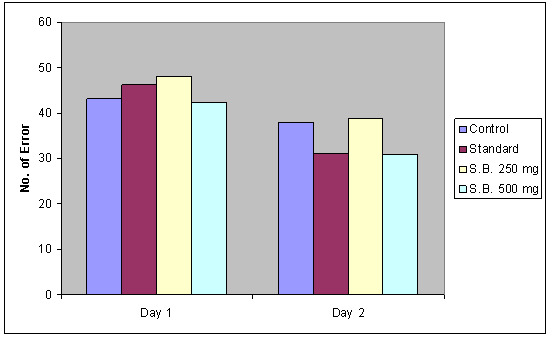
Fig.2 Effect of methanolic extract of Selaginella bryopteris on error in Swiss albino mice in radial arm maze model
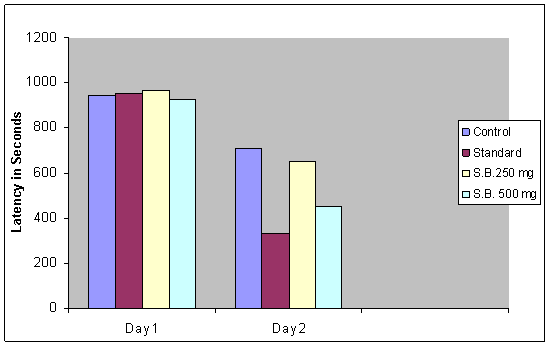
Fig.3 Fig. 5.9 Effect of methanolic extract of Selaginella bryopteris on latency in Swiss albino mice in radial arm maze model
NOW YOU CAN ALSO PUBLISH YOUR ARTICLE ONLINE.
SUBMIT YOUR ARTICLE/PROJECT AT articles@pharmatutor.org
Subscribe to Pharmatutor Job Alerts by Email
FIND OUT MORE ARTICLES AT OUR DATABASE
Histological Studies
The section of the brain of the control group when compared with treated group animal showed observable differences in population of pyramidal cells. In control group animals, population of pyramidal cells was average, Gray matter and White matter.
Methanolic extract of Selaginella bryopteris 250 and 500 mg/kg treated groups showed increase in population of pyramidal cells and the junction of cerebrellar cortex molecular layer shows neuron synapses.
The T.S. of brain section revelled well define Pyramidal cells Gray matter, White matter than moderately differentiated average populated pyramidal cells.
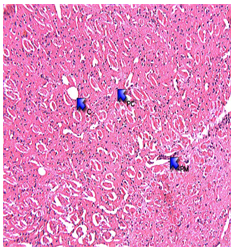
Fig.1 Transverse Histoarchitecture of brain of control group
The T.S. of brain section revelled good number of pyramidal cells however, the uniformity is distorted
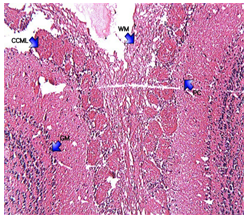
Fig.2 Transverse Histoarchitecture of brain of Standard group
The T.S. of brain revelled distance feature of white matter, gray matter below the white matter uniform layer of cerebrellar cortex of granular layer this molecular layer consist sequence of pyramidal
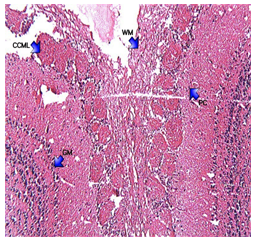
Fig.3 Transverse Histoarchitecture of brain of S. bryopteris 250 mg group
The junction of Cerebrellar cortex molicular layer shows neuron synapses, distinct dendron’s and pyramidal cells population can be seen.
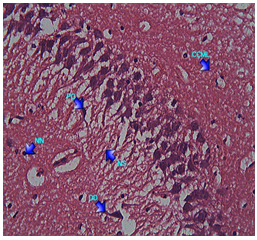
Fig.4 Transverse Histoarchitecture of brain of S. bryopteris 500 mg group (PC- Pyramidal cells, CCML- Cerebreller cortex of molecular layer, WM- White matter, GM- Gray matter, NS- Neuron synapses)
Discussion
Alzheimer disease (AD) is a neurodegenerative disorder currently without an effective treatment. Impairment of memory is the initial and most significant symptom of Alzheimer disease (AD).
In the present study 250 and 500 mg/kg of Selaginella bryopteris extract administered orally for 7 days improved learning and memory of mice significantly in both the exteroceptive behaviour models.
This research finding showed enhancement of learning and memory by sanjeevani. These finding suggested the possible neuroprotective role for sanjeevani.
Shankpushpi (Positive control) the herb of access of nootropic agents has been shown to improve memory depicits in geriatric individuals. Repeated dose of Shankpushpi had improved learning abilities and many capacities of laboratory animals. Both Shankhpushpi and Selaginella bryopteris extract meet major criteria for nootropic activity namely improvement of memory in the absence of cognitive deficits.
However, further investigation using more experimental paradigms are required for further confirmation of nootroic potential of Selaginella bryopteris in the treatment of various cognitive disorders.
Conclusion
In the present investigation, Selaginella bryopteris have shown promising memory enhancement agent in mice.
In the present study, 500 mg/kg of Selaginella bryopteris extract administered orally for 7 days improved learning and memory of mice significantly in both the exteroceptive behaviour models employed. The stimulus lie outside the body in Exteroceptive behaviour models, whereas, it lies within the body in the case of interoceptive models.
Acknowledgment
Author is grateful to Dr. M.S. Parihar for authentication of plant drug
References
1. David Banji, Otilia Banji, Annamalai A. R. And Manavalan R. Investigation on the effect of Eclipta alba on animal model of learning and memory. Indian J Physiol Pharmacology (2007); 51(3): 274-278.
2. Dhingra D, Parle M and Kulkarni SK. Neurochemical Basis of Learning and Memory, Indian J. Pharm. Sci. (2004), 66(4):371-376.
3. Ganguly R and Guha D. Alteration of brain monoamines and EEG wave patterns in rat model of Alzheimer’s disease and protection by Moringa oleifera. Indian J Med Res (2008); 744- 751
4. Jagdeep S. Dua, D. N. Prasad, Avinash C. Tripathi, Rajiv Gupta. Role of traditional medicine in Neuropsychopharmacology. Asian Journal of Pharmaceutical and Clinical Research (2009); 2(2): 72-76.
5. Lisa M. Savage. Animal models of memory disorder give insight into how psychological and neural systems interact. Psychological science agenda (2004); 18 (7): 1-3.
6. Milind Parle and Mani Vasudevan. Memory enhancing activity of Abana: An Indian Ayurvedic poly herbal formulation. Journal of health Science (2007); 53(1): 43-52.
7. Nand K Sah, Shyam Nandan P Singh, Sudhir Sahdev, Sharmishta Banerji, Vidyanath Jha, Zakir Khan and Seyed E Hasnain. Indian herb Sanjeevani (Selaginella bryopteris) can promote growth and protect against heat shock and apoptic activities of ultraviolet and oxidative stress. J. Biosci. (2005); 30: 499-505.
8. Olaf Kunert, Rumalla C. Swamy, Marcel Kaiser , Armin Presser, Silke Buzzi, A.V.N. Appa Rao ,Wolfgang Schuhly. Antiplasmodial and leishmanicidal activity of biflavonoids from Indian Selaginella bryopteris. Phytochemistry Letters (2008); 1: 171–174.
9. Olaf Kunert, Ramalla Chidananda Swamya, Wolfgang Schhly, FranzBucar, Daneel Ferreirad, Vanapatla Swarupa Rani, Bobbala Ravi Kumar and Achanta Venkata Narasimha Appa Rao. Structurally Unique bioflavonoids from Selaginella chrysocaulos and Selaginella bryopteris. Chemistry & biodiversity (2006); 3: 405-414.
10. Pandey S, Khan AA, Shankar K, Singh N. An experimental study on the anti-stress and anti-oxidant activity of Selaginnella bryopteris. J Biol Chem Res (1993)12:128-139.
11. Pankaj Sah. Does the magical Himalayan herb “Sanjeevani Booti” really exist in Nature? The Journal of American Science, (2008); 4(3): 65-67.
12. Trond M, Neurotransmitter system involved in learning and memory in the rat: A meta analysis based on studies of four behavioural tasks. Brain Rev. (2003), 41: 268-287.
13. Vogel, HG. Drug Discovery and Evaluation; Pharmacological Assays, Springer-Verleg, Germany (2002); 619-643.
NOW YOU CAN ALSO PUBLISH YOUR ARTICLE ONLINE.
SUBMIT YOUR ARTICLE/PROJECT AT articles@pharmatutor.org
Subscribe to Pharmatutor Job Alerts by Email
FIND OUT MORE ARTICLES AT OUR DATABASE











.png)

